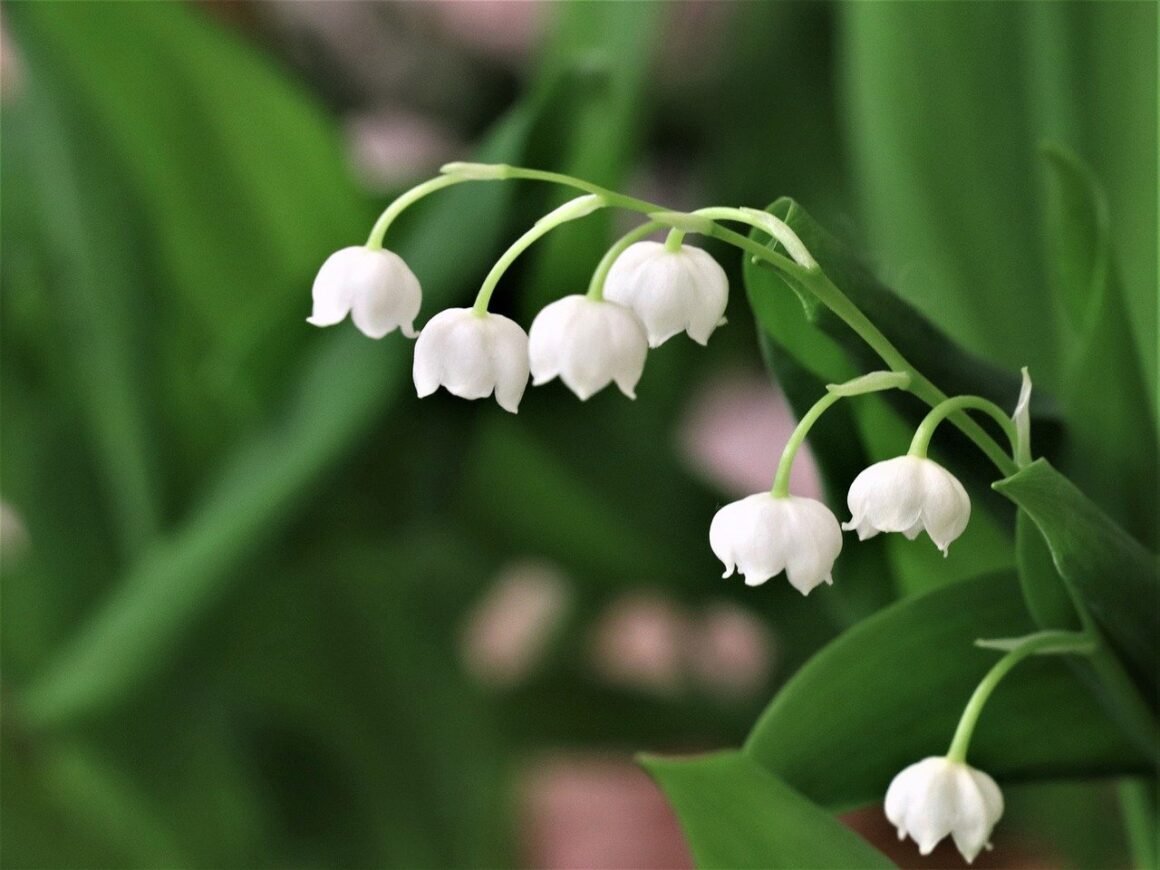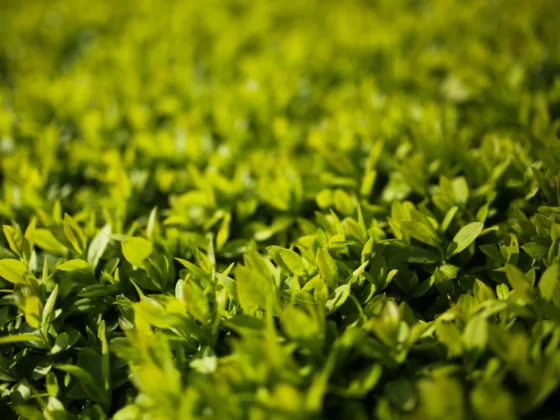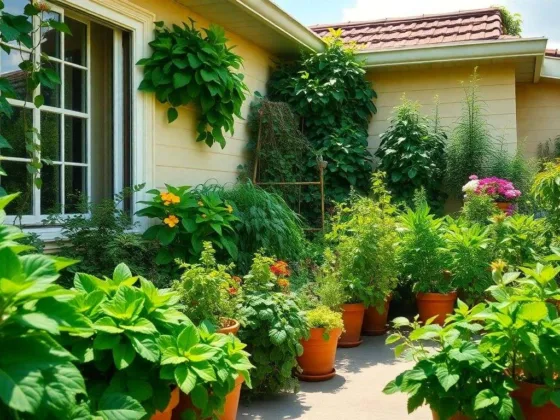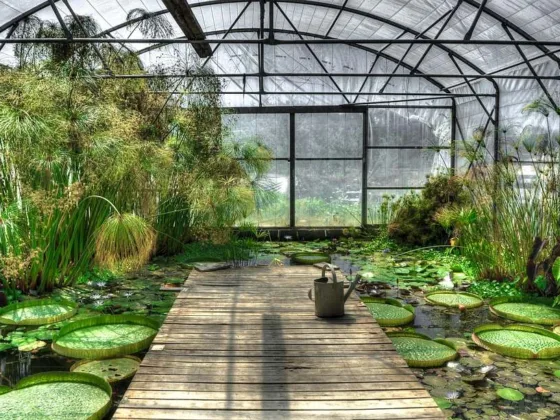Table of Contents Show
What would spring be without the sweet fragrance of lily-of-the-valley? These dainty little bells add grace and beauty to any shady spot in early spring, and they are one of the easiest plants to force indoors.
Lily of the Valley – Lily of the Flower
Lily-of-the-valley, also known as the flower lily (Convallaria majalis), is a charming perennial that grows only about a foot tall. This plant is celebrated for its ability to spread quickly, and efficiently filling an area with its lush foliage and delicate blooms.

Key Characteristics
Height: Approximately 1 foot tall.
- Lily-of-the-valley typically reaches a uniform height, making it an excellent choice for ground cover in shaded garden areas.
- Its compact size allows it to fit well in small garden spaces or containers.
Flowers: Small, fragrant white or pink bell-shaped flowers.
- The delicate blooms are not only visually appealing but also emit a sweet fragrance that enhances the sensory experience of your garden.
- Flowers usually appear in clusters along one side of the stem, adding an elegant touch to the plant’s overall appearance.
- While white is the most common color, some varieties feature soft pink blossoms, providing subtle variations.
Blooming Season: Early spring.
- Lily-of-the-valley is among the first perennials to bloom as winter fades, bringing an early splash of color and fragrance to your garden.
- Its early blooming period makes it a valuable plant for extending the flowering season and providing interest when few other plants are in bloom.
Growth and Spread
The rapid spreading nature of lily-of-the-valley makes it ideal for ground cover in shaded areas. This plant forms dense colonies through its extensive network of rhizomes, which are underground stems that produce roots and shoots. As these rhizomes spread, they create a carpet of green leaves that is both lush and visually appealing.
Characteristics of Growth:
- Rhizome Expansion: The rhizomes can quickly colonize an area, ensuring that the plant establishes itself firmly in new locations.
- Leaf Coverage: The broad, glossy leaves provide a continuous layer of green, enhancing the aesthetic appeal of any shaded garden space.
- Flower Production: In early spring, this green carpet is topped with delicate, bell-shaped blooms that add a touch of elegance to the landscape.
Tip: Because of its vigorous growth habit, lily-of-the-valley can become invasive if not managed properly. Consider planting it in contained areas or using barriers to control its spread.
Ideal Growing Conditions:
- Soil: Prefers well-drained, humus-rich soil.
- Light: Thrives in partial to full shade but can tolerate some sun if the soil remains moist.
- Watering: Requires consistent moisture, particularly during dry spells.
By understanding these growth characteristics and providing the right conditions, you can enjoy a vibrant and low-maintenance ground cover that brings beauty and fragrance to your garden.
Ideal Uses
Ground Cover:
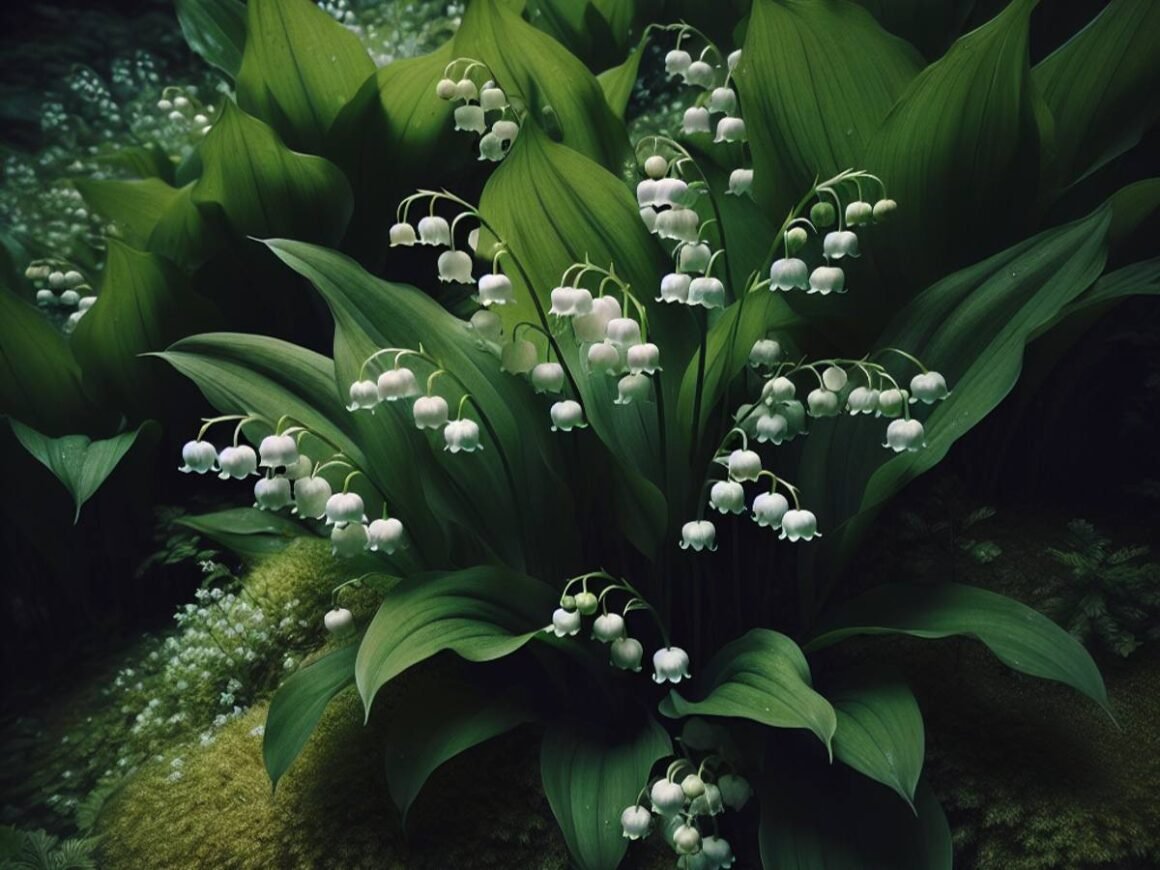
Lily-of-the-valley is ideal for creating a lush, green carpet in shaded garden corners or under the canopy of trees. Its broad, glossy leaves and rapid spread provide excellent coverage, helping to suppress weeds and maintain soil moisture. This makes it an excellent choice for areas where other plants may struggle to thrive due to low light conditions.
Cut Flowers:
The aromatic blooms of lily-of-the-valley are perfect for indoor arrangements, bringing their delightful fragrance into your home. When cut at the right time, these flowers can last for several days in a vase, adding a touch of natural elegance to any room. Their delicate, bell-shaped flowers also make them a favorite choice for small bouquets and boutonnieres.
Bridal Bouquets:
Frequently used in wedding floral arrangements, lily-of-the-valley is prized for its classic beauty and sweet fragrance. These blooms symbolize purity and humility, making them a meaningful addition to bridal bouquets. Their elegant appearance complements a wide range of wedding styles, from traditional to modern, ensuring they remain a timeless favorite among brides.
Shade Gardens:

In addition to being a fantastic ground cover, lily-of-the-valley thrives in shade gardens, where many other plants might falter. Its ability to tolerate low light levels while still producing vibrant green foliage and charming flowers makes it invaluable for enhancing shaded areas. Use it alongside hostas and ferns to create a multi-textured landscape that brings depth and interest to your garden’s darker spots.
Naturalizing Areas:
Thanks to its vigorous growth habit, lily-of-the-valley is well-suited for naturalizing areas, especially in woodland settings or along shaded pathways. Once established, it requires minimal maintenance and will spread steadily over time, creating a seamless blend with the natural environment.
By incorporating lily-of-the-valley into these various garden settings, you can take full advantage of its versatility and striking beauty.
Interesting Facts
- Fragrance: The scent of lily-of-the-valley is not only sweet but also quite strong, often noticeable even from a distance.
- Historical Significance: Historically, these flowers have been symbols of purity and humility.
- Cultural Reference: Featured prominently in folklore and various cultural traditions worldwide.
With its enchanting bell-shaped flowers and pleasant fragrance, lily-of-the-valley adds grace and charm to any garden setting while requiring minimal care once established.
Planting Lily-of-the-Valley
Lily-of-the-valley thrives in full or partial shade in rich, moist, but well-drained soil. This plant makes an excellent ground cover under shade trees but is not suitable for borders because of its aggressive spreading habit. Lily-of-the-valley is hardy in USDA zones three to eight.
When to Plant
Fall:
- Optimal Timing: Traditionally, lily-of-the-valley is planted in the fall for spring blooms. Fall planting allows the roots to establish themselves over the winter, ensuring a robust display of flowers when spring arrives.
- Root Establishment: During the fall and winter months, the roots have ample time to settle in and develop a strong foundation, which is crucial for vigorous growth.
- Pre-Frost Planting: Aim to plant before the first frost to give the pips (the small root structures) adequate time to settle in. This pre-frost period is essential as it prevents damage from freezing temperatures and promotes better root health.
Spring:
- Alternative Option: Alternatively, lily-of-the-valley can also be planted in spring. If you missed the fall planting window, early spring is an excellent time to get them into the ground.
- Soil Conditions: Plant as soon as the soil is workable and has warmed up slightly. This slight warmth helps to kickstart root growth but avoids the stress of summer heat.
- Timing Before Heat: Ensure planting occurs before the heat of summer sets in. This timing ensures they have enough time to root and grow before blooming, giving them a head start on establishing themselves before harsher conditions arrive.
Both planting times have their own benefits and can be chosen based on your specific gardening schedule and regional climate conditions. By selecting the appropriate season for planting, you can optimize growth and enjoy a lush, fragrant display of lily-of-the-valley flowers.
Soil and Location
- Soil Requirements: Ensure the soil is rich and moist but well-drained. Add organic matter such as compost or well-rotted manure to improve soil fertility and structure. This enhances nutrient availability and water retention, vital for robust growth.
- pH Level: Aim for a slightly acidic to neutral pH range (6.0-7.0). Test your soil beforehand; if necessary, amend it with lime to raise the pH or sulfur to lower it.
- Light Conditions: Prefers full or partial shade. Ideal locations include under deciduous trees or on the north side of buildings where they receive dappled sunlight. Too much direct sunlight can scorch the leaves, while deep shade may reduce flowering.
Tip: If planting in an area with fluctuating light conditions, monitor the plant’s response over time and adjust as needed by moving or providing additional shade with garden fabrics or temporary structures.
Planting Tips
Spacing
Depth:
- Planting Depth: Place the pips (the small bulbs) about 3 inches deep into the soil. This depth ensures they are well protected from surface disturbances and temperature fluctuations. Planting at this depth also helps to anchor the pips securely, promoting robust root development.
Tip: Use a small trowel or garden dibber to create uniform planting holes, ensuring each pip is placed at the same depth for consistent growth.
Distance:
- Spacing Between Pips: Space each pip 6 to 10 inches apart. This spacing allows for adequate air circulation, which is crucial in preventing fungal diseases. It also provides enough room for the plants to spread out as they grow, reducing competition for essential resources such as nutrients, water, and light.
Tip: If planting in rows or clusters, use a measuring tape or a garden ruler to maintain consistent spacing. Mark the positions with small stakes or garden markers beforehand to ensure precise placement.
By adhering to these guidelines on depth and distance, you can optimize growth conditions for your lily-of-the-valley plants, leading to a healthier and more vibrant garden display.
Firming the Soil
After planting, firm the soil around the pips by pressing lightly with your foot or hands. This step is critical for several reasons:
- Elimination of Air Pockets: Air pockets can dry out roots, leading to poor plant establishment. By firming the soil, you ensure that these gaps are minimized.
- Optimal Soil Contact: Pressing the soil ensures good contact between the soil and the newly planted pips. This is essential for water uptake and nutrient absorption.
- Root Stability: Firming helps anchor the roots securely in place, preventing them from shifting due to watering or natural settling of the soil.
Steps to Firm the Soil:
- Initial Tamping: After placing each pip in its hole, gently press down on the soil surrounding it using your hands. Ensure that you apply even pressure without compacting the soil too tightly.
- Foot Press: For larger planting areas, use your foot to lightly tamp down the soil. Step gently but firmly around each pip, ensuring an even surface.
- Inspection: After firming, inspect each pip to make sure it remains at the correct depth and alignment. Adjust as necessary.
Tip: Avoid heavy compaction as overly compacted soil can impede root growth and water infiltration.
By following these steps, you create a supportive environment that promotes healthy root development and robust plant growth.
Watering
- Initial Watering: Once planted, water the area thoroughly. Water slowly to allow the soil to absorb as much water as possible, ensuring deep moisture penetration which is crucial for root establishment.
- Continued Care: Keep the soil consistently moist but not waterlogged. Regular watering helps maintain the necessary moisture levels, especially during dry spells or in sandy soils that drain quickly.
Tip: Incorporate a layer of mulch around the plants to help retain soil moisture, suppress weeds, and regulate soil temperature. Mulching can significantly benefit young lily-of-the-valley plants as they establish themselves.
Controlling Spread
If you are concerned about the plant’s invasive nature:
- Containers: Plant lily-of-the-valley in containers and then sink the container into the ground to limit its spread. Containers act as a barrier, preventing the roots from extending beyond their designated area.
- Root Barriers: Install root barriers around the planting area. These barriers can be made from plastic or metal and should extend at least 12 inches deep into the soil to block underground runners.
- Regular Monitoring: Keep an eye on your lily-of-the-valley patch. Regularly inspect the boundaries and remove any runners that have crossed the intended limits.
- Divide Clumps: Periodically dig up and divide clumps of lily-of-the-valley to prevent overcrowding and control their spread. This is best done in early spring or late fall when the plants are dormant.
By following these guidelines, you’ll ensure a healthy growth environment for your lily-of-the-valley, allowing it to flourish while maintaining control over its spreading tendencies.
Lily of the Valley Plant Care
Care Tips
Keep Lily-of-the-Valley moist but not waterlogged.
- Consistent moisture is crucial, but avoid waterlogging to prevent root rot.
- Watering should be regular, especially during dry spells.
Fertilize the plants at the beginning of spring, or side-dress with leaf mold or compost.
- Use a balanced fertilizer to ensure healthy growth.
- Take care not to splash fertilizer onto the leaves to avoid potential burn.
Do not cut back the foliage until it turns yellow.
- The foliage is vital for photosynthesis, which helps produce next year’s blooms.
- Allow the leaves to die back naturally to let the pips absorb all necessary nutrients.
Additional Tips
Divide Plants Every Five Years
- Over time, lily-of-the-valley can become crowded, leading to reduced blooming.
- For container-grown plants, consider dividing more frequently, as containers restrict growth space.
How to Divide:
- Dig up the pips in fall or early spring when the plant is dormant.
- Carefully separate them into groups of five pips each.
- Replant the divisions according to spacing guidelines (3 inches deep and 6-10 inches apart).
By following these tips, you’ll ensure your lily-of-the-valley remains healthy and vibrant year after year.
Forcing Indoors
Lily of the Valley flowers are easy to grow indoors any time of year, and the fragrance is especially nice on a bedside table or near a favorite reading chair. The plants grow quickly indoors, and you should see growth within a week and flowers in about four weeks.
Choosing a Container
Selecting the right container is a key step in ensuring the healthy growth of your lily-of-the-valley plants. You can use almost any type of container, provided it meets specific requirements.
Container Size:
The container should be at least 3 inches deep. This depth allows enough room for the roots to establish and grow without being cramped. If the roots don’t have adequate space, it can lead to stunted growth and poor blooming.
Material:
Containers made from terracotta, plastic, ceramic, or wood are all suitable options. Each material has its pros and cons:
- Terracotta: Porous and allows for better aeration but can dry out quickly.
- Plastic: Lightweight and retains moisture well but can overheat in direct sunlight.
- Ceramic: Aesthetically pleasing and retains moisture, but can be heavy.
- Wood: Provides good insulation for roots but may deteriorate over time if not treated properly.
Drainage:
Proper drainage is essential to prevent root rot and ensure healthy growth. Make sure your container has several drainage holes at the bottom. If your chosen pot doesn’t have drainage holes, you can drill some yourself or place a layer of gravel at the bottom to improve water flow.
Size Considerations:
While a minimum depth of 3 inches is required, a deeper and wider container will allow for more robust growth and easier maintenance. If you plan to plant multiple pips in one container, ensure there’s sufficient space between them (about 6-10 inches apart).
By paying attention to these details when choosing a container, you’ll create an ideal environment for your lily-of-the-valley plants to thrive.
Soil Requirements
Use potting soil that holds lots of moisture. A soil with a high percentage of peat moss works well because it retains moisture while providing good aeration for the roots.
- Soil Type: Moisture-retentive potting mix
- Ideal Components: High percentage of peat moss
Preparing the Pips
- Soak the pips in room temperature water for a couple of hours or until they are full and hard. This helps them absorb moisture effectively, jumpstarting their growth.
- Clip off the last inch of the roots to allow the pips to absorb water more easily. This minor trimming encourages quicker hydration and healthier root development.
Planting Steps
- Plant the pips so that their tops are just visible above the soil. Ensure they are spaced about 1 1/2 inches apart.
Tip: Use a small stick or your finger to create holes for planting. This ensures each pip is planted at the correct depth and spacing, providing optimal conditions for growth.
- Water thoroughly after planting and ensure that the soil remains consistently moist but not waterlogged.
Remember: The plants grow quickly and need plenty of water to thrive indoors. Consistent moisture levels help prevent the roots from drying out, which can stunt growth and delay flowering.
- Monitor sunlight exposure by placing the container in a spot with indirect sunlight. Lily of the Valley thrives in bright, filtered light rather than direct sun, which can scorch the leaves.
Tip: A north-facing window or a spot with morning sun and afternoon shade works well. Adjust the plant’s location as needed to maintain the ideal light conditions.
- Maintain humidity around the plants by misting them regularly or placing a humidity tray nearby. Higher humidity mimics their natural woodland habitat, promoting lush foliage and vibrant blooms.
Interesting Fact: Lily of the Valley is native to temperate regions of Europe and Asia, where it grows in moist, shaded forests.
By following these steps, you’ll enjoy beautiful Lily of the Valley blooms inside your home in no time.
Cost and Availability
Lily of the Valley is readily available at local garden centers, nurseries, and from most online companies that sell bulbs and plants.

Key Points to Consider
Local Garden Centers and Nurseries:
- Most local suppliers stock Lily of the Valley, especially during planting seasons.
- Buying locally allows you to inspect the rhizomes for quality before purchasing. This hands-on approach ensures you get healthy, viable plants.
- Staff at local centers can provide personalized advice tailored to your region’s climate and soil conditions.
Online Retailers:
- Many reputable online stores offer a variety of Lily of the Valley rhizomes. Some websites even specialize in rare or unique varieties.
Benefits:
- Convenience: Purchasing online provides the ease of home delivery, saving you time and effort.
- Customer Reviews: Access to reviews from other buyers can help you gauge the reliability of the seller and the quality of their products.
Price Range
The cost typically ranges from $1.50 to $2.00 per rhizome, often sold in lots of 6, 10, or 12. Bulk purchasing can sometimes lower the price per unit.
Interesting Fact: The price can vary slightly based on the variety and rarity of the Lily of the Valley rhizomes you choose. Specialty varieties may command a higher price due to their unique attributes.
By considering these factors, you can make an informed decision about where and how to purchase your Lily of the Valley rhizomes.
Tips for Buying
- Check Reviews: When buying online, look for sellers with positive feedback. Customer reviews can provide insights into the reliability of the seller and the quality of their products. Pay attention to comments regarding delivery times, packaging, and the condition of the rhizomes upon arrival.
- Inspect Quality: If purchasing locally, examine the rhizomes for signs of health such as firmness and absence of mold. Healthy rhizomes should be plump, firm to the touch, and free from any discoloration or soft spots. Avoid rhizomes that appear shriveled or have visible signs of rot.
- Seasonal Sales: Keep an eye out for seasonal discounts which can make bulk purchases more affordable. Many garden centers and online retailers offer promotions during peak planting seasons in spring and fall. By planning your purchase around these times, you can take advantage of significant savings.
- Ask Questions: Don’t hesitate to ask questions whether purchasing online or in-person. Inquire about the origin of the rhizomes, how they were stored, and any care instructions provided by the seller.
- Research Varieties: Lily of the Valley comes in several varieties with slight differences in flower color and fragrance intensity. Researching these varieties beforehand ensures you select one that best suits your garden’s aesthetics and your personal preferences.
By understanding these factors, you can ensure you get the best value and quality when purchasing Lily of the Valley for your garden.
References and Resources
For more detailed information on Convallaria majalis (Lily of the Valley), consider the following resources:
- Missouri Botanical Garden: The Missouri Botanical Garden provides an extensive overview of Convallaria majalis. This includes details on its growth habits, care requirements, and potential issues. Visit their page for in-depth knowledge: Convallaria majalis.
- Royal Horticultural Society (RHS): RHS offers a comprehensive plant profile with cultivation advice, pest and disease management, and planting tips. Their expertise can help ensure your Lily of the Valley thrives. Explore their resource here: RHS Convallaria majalis.
- American Horticultural Society (AHS): AHS provides valuable insights into the historical significance and diverse uses of Lily of the Valley in various garden settings. Check their guide for practical tips: AHS Guide to Lily of the Valley.
- University Extension Programs: Many universities offer extension programs with regional-specific advice on growing Convallaria majalis. These can be particularly helpful if you are looking for guidance tailored to your local climate conditions. For example, you can refer to the University of Minnesota Extension for localized tips.
These references will provide a robust foundation for understanding and successfully cultivating Lily of the Valley in your garden.
FAQs (Frequently Asked Questions)
Lily of the Valley typically grows to a height of approximately 1 foot. It spreads rapidly due to its rhizome expansion, making it an ideal ground cover plant.
Lily of the Valley prefers well-drained, humus-rich soil and thrives in partial to full shade. It is also suitable for areas with consistent moisture.
Traditionally, fall is the best time to plant Lily of the Valley. Ensure that the soil is rich, moist, and well-drained for successful planting.
If you are worried about the plant’s invasive nature, consider planting it in containers or using barriers to prevent its spread into unwanted areas.
Keep Lily of the Valley moist but not waterlogged, and divide plants every five years to prevent overcrowding. Additionally, consider forcing indoors for indoor growth.
Lily of the Valley is readily available at local garden centers and nurseries, with a typical cost ranging from $1.50 to $2.00 per rhizome. When buying online, check reviews for reputable sellers.
